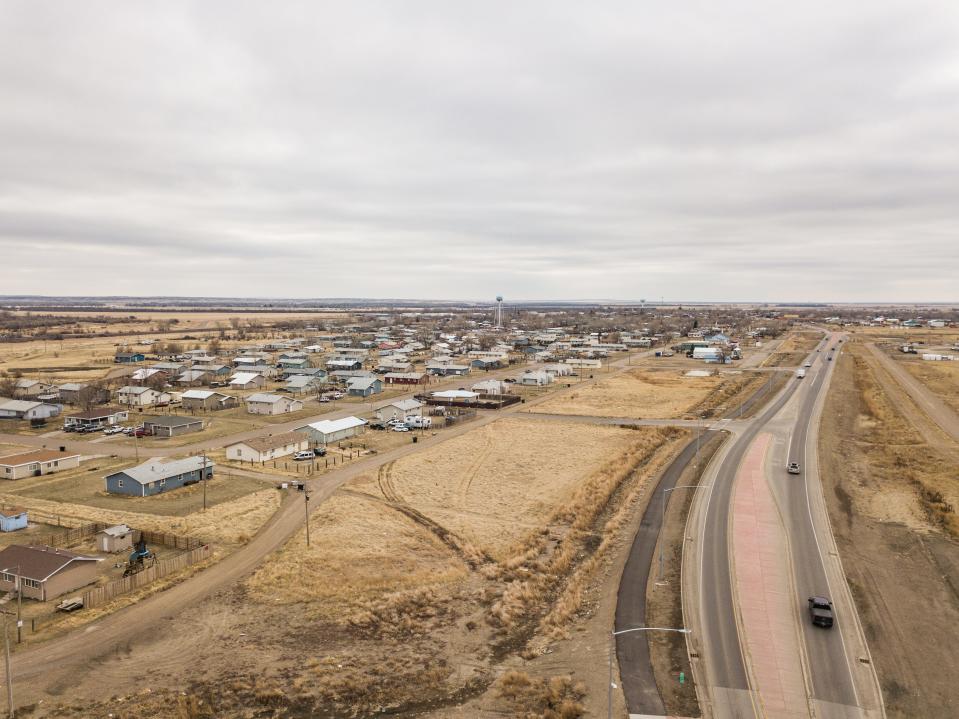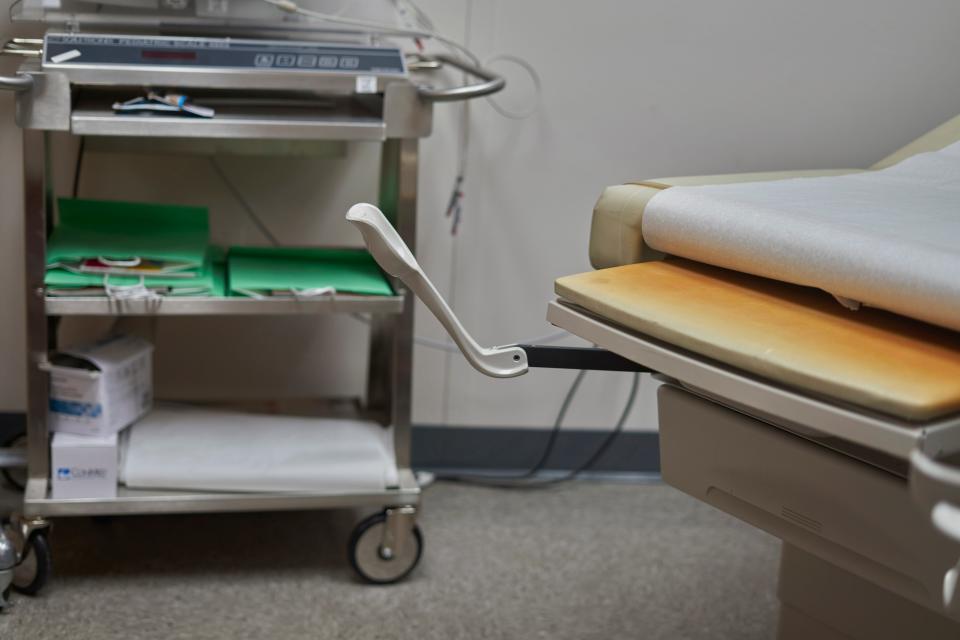Helpers few and far between for rural Americans kicked off Medicaid after pandemic
Abby Madore covers a lot of ground each day at work.
A staffer at a community health center in Carson City, Nevada, Madore spends her days helping low-income residents understand their health insurance options, including Medicaid. Her phone is always ringing, she said, as she fields calls from clients who dial in from the state’s remote reaches seeking help.
It's a big job, especially this year, as states work to sort through their Medicaid rolls after the end of a pandemic-era freeze that prohibited disenrollment.
A few dozen specialists work for seven navigator organizations responsible for helping Nevadans enroll in or keep their coverage. Madore said she mostly works with people who live in rural Nevada, a sprawling region spanning more than 95,000 square miles.
Katie Charleson, a spokesperson for Nevada’s state health marketplace, said it’s always a challenge to reach people in rural areas. Experts say this problem isn’t unique to Nevada and there's growing concern that limited resources will throw rural Americans into jeopardy as the Medicaid unwinding continues.
Recent data submitted to the Centers for Medicare & Medicaid Services shows 72% of people who have lost Medicaid coverage since states began the unwinding process this year were disenrolled for procedural reasons, not because officials determined they were no longer eligible for the joint state-federal health insurance program.
By late August, federal officials directed state Medicaid overseers to pause some procedural disenrollments and reinstate some recipients whose coverage was dropped.
Experts say those procedural disenrollments could disproportionately affect people in rural regions of the country.
A brief recently published by researchers at the Georgetown University Center for Children and Families noted that rural Medicaid recipients face additional barriers to renewing their coverage, including longer travel to eligibility offices and less internet access.
Nationwide, Medicaid and CHIP, the Children’s Health Insurance Program, covered 47% of children and 18% of adults, respectively, in small towns and rural areas, compared with 40% of children and 15% of adults in metropolitan areas.
“As is clear from our research, rural communities rely on Medicaid to form the backbone of their health care system for children and families,” said Joan Alker, one of the brief’s co-authors and executive director of the Center for Children and Families. “So if states bungle unwinding, this is going to impact rural communities, which are already struggling to keep enough providers around and keep their hospitals.”
A lack of access to navigators in rural locales to help Medicaid enrollees keep their coverage or find other insurance could exacerbate the difficulties rural residents face. Navigators help consumers determine whether they’re eligible for Medicaid or CHIP, which provides coverage for children whose families earn too much to qualify for Medicaid, and help them enroll. For clients who are not eligible for these programs, navigators help with enrollment in marketplace plans.
Navigators operate separately from Nevada's more than 200 call center staffers who help residents manage social service benefits.
Navigators are required by the federal government to provide their services at no cost to consumers and give unbiased guidance, setting them apart from insurance broker agents, who earn commissions on certain health plans. Without them, there would be no free service guiding consumers through shopping for health insurance and understanding whether their health plans cover key services, like preventive care.
Roughly 30 to 40 certified enrollment counselors like Madore work at navigator organizations helping consumers enroll in plans through the state health marketplace, which sells Affordable Care Act plans, the state program's spokesperson said. One of these groups is based in Carson City, the small capital city about 30 miles south of Reno. The rest are in the urban centers of Reno and Las Vegas.
Availability of navigators and their outreach tactics vary from state to state.
In Montana, which has more land than Nevada but one-third its population, six people work as navigators. They cover the entire state, reaching Medicaid beneficiaries and people seeking help with coverage by phone or in person by traveling to far-flung communities. For example, a navigator in Billings, in south central Montana, has worked with the Crow and Northern Cheyenne tribes, whose reservations are relatively nearby, said Olivia Riutta, director of population health for the Montana Primary Care Association. But officials struggle to reach clients northeast Montana, the region that is home to the Fort Peck Reservation.

Having navigators to provide in-person help in rural communities is an ongoing challenge nationwide, said Alker, a co-author of Georgetown's Center Children and Families brief. But the end of pandemic protections is an especially important moment for navigators and the role they play in guiding people through complex insurance processes, she said.
This became clear following a recent survey that looked at what consumers encountered when they independently searched for health coverage on Google. “The results are really concerning,” said survey co-author JoAnn Volk, the founder and co-director of the Georgetown University Center on Health Insurance Reforms.
The researchers found that former Medicaid enrollees looking for health plans on the private market face aggressive, misleading marketing of limited-benefit products that don’t cover important services and fail to protect consumers from high health costs.
Researchers tried shopping for coverage using two profiles of consumers who were losing Medicaid coverage and were eligible for a plan with no premiums or deductibles on the ACA marketplace.
The team reported that none of 20 sales representatives who responded to their queries mentioned no-premium, no-deductible plan, and more than half pushed limited-benefit products. The representatives also made false and misleading statements about the plans they were touting and misrepresented the availability or affordability of the marketplace plans.
The sales reps and brokers quoted limited plans that cost $200 to $300 a month, Volk said. Such an expense could prove unaffordable for consumers who may still have low incomes despite being ineligible for Medicaid.
“If they can’t get to a navigator, I would not trust that they would get to their best coverage option in the marketplace, or to the marketplace at all, frankly,” Volk said.
The federal government does not require states to break down Medicaid disenrollment data by county, so it is challenging for researchers to track and differentiate between rural and urban concerns.
A data point that will be important to watch as states continue the redetermination process, Alker said, is call center statistics. People in rural areas rely more heavily on phone calls to renew their coverage.

“Call abandonment rate,” which measure that frequency of calls getting dropped from the queue, is one such statistic. In August, the agency sent a letter to the Nevada Department of Health and Human Services noting that on average 56% of calls dropped in May, the first month after Nevada’s unwinding began.
All 50 states received letters about early data, but only Idaho, South Carolina, Texas and Utah had higher disenrollment rates than Nevada, and no state had a higher rate of call abandonment.
Officials at Nevada’s Division of Welfare and Supportive Services said their call center, staffed by 277 family service specialists, receives more than 200,000 calls a month. A spokesperson said the phone system offers self-service options that provide information about customers' Medicaid renewal date and benefits. Because those calls aren’t handled by a case manager, they are considered “abandoned,” the spokesperson said, raising the rate even though callers’ questions may have been fully addressed.
People shopping around for coverage after a lapse might go into a panic, Madore, the Nevada navigator, said, and the best part of her job is providing relief by helping them understand their options after disenrollment from Medicaid or CHIP.

When people learn about the wide range of free services navigators like Madore can connect them to, they’re shocked, she said.
“They’re unaware of how much support we can provide,” Madore said. “I’ve had people call me back and they say, ‘It’s my first time using insurance. Where do I go to urgent care?’”
KFF Health News, formerly known as Kaiser Health News (KHN), is a national newsroom that produces in-depth journalism about health issues and is one of the core operating programs at KFF – the independent source for health policy research, polling, and journalism.
This article originally appeared on USA TODAY: Medicaid in rural America: Why many struggle to get help after COVID

